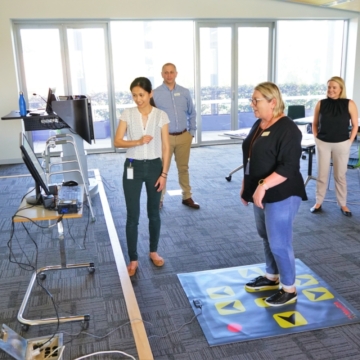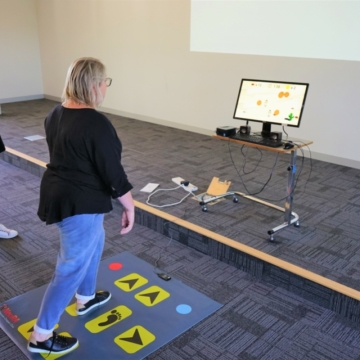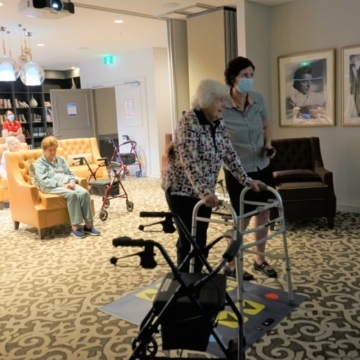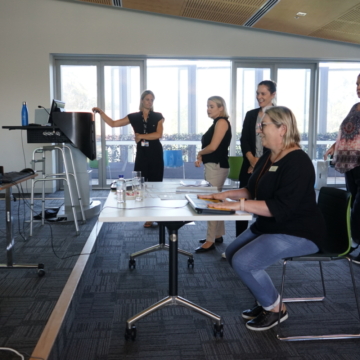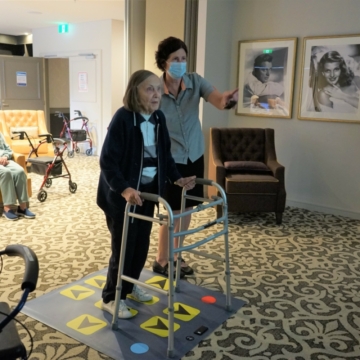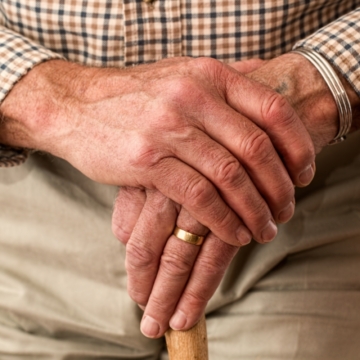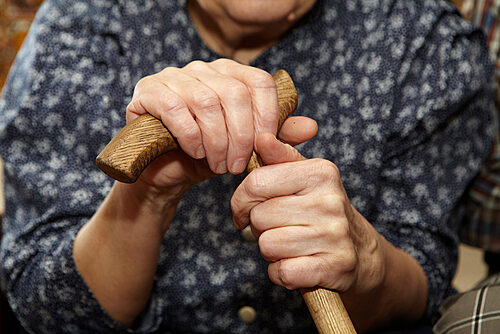Research Project

Morag Taylor
Current Appointments
Senior Research FellowKey Research Areas
Dr Morag Taylor is a Senior Research Fellow at Neuroscience Research Australia. She was awarded a prestigious NHMRC-ARC Dementia Research Development Fellowship 2016 – 2020. Currently her work is focusing on physical and cognitive function and fall/fall-injury risk and prevention in older people with dementia. She completed her PhD (Understanding fall risk in cognitively impaired older people) in 2014 (Medicine, UNSW), has presented her work nationally and internationally and published widely in peer reviewed journals. Morag is a physiotherapist with extensive experience working in Aged Care Rehabilitation, as well as the Falls, Balance and Bone Health clinic.
Publications
2024 Apr
Cognitive and physical declines and falls in older people with and without mild cognitive impairment: a 7-year longitudinal study
View full journal-article on https://doi.org/10.1017/S1041610223000315
2024 Mar
Improving hip fracture care: A five‐year review of the early contributors to the Australian and New Zealand Hip Fracture Registry
View full journal-article on https://doi.org/10.1111/ajag.13270
2024, 11 Feb
Effect of cognitive training on cognitive function in community‐dwelling older people with mild‐to‐moderate dementia: A single‐blind randomised controlled trial
View full journal-article on https://doi.org/10.1111/ajag.13283
2023
Associations between psychotropic and anti-dementia medication use and falls in community-dwelling older adults with cognitive impairment
View full journal-article on http://www.scopus.com/inward/record.url?eid=2-s2.0-85162949317&partnerID=MN8TOARS
2023
Physiotherapy-led telehealth and exercise intervention to improve mobility in older people receiving aged care services (TOP UP): Protocol for a randomised controlled type 1 hybrid effectiveness-implementation trial
View full journal-article on http://www.scopus.com/inward/record.url?eid=2-s2.0-85177585158&partnerID=MN8TOARS
2022, 02 Sep
World guidelines for falls prevention and management for older adults: a global initiative
View full journal-article on http://dx.doi.org/10.1093/ageing/afac205
2022
Erratum to: Tailored Exercise and Home Hazard Reduction Program for Fall Prevention in Older People With Cognitive Impairment: The i-FOCIS Randomized Controlled Trial
View full journal-article on http://www.scopus.com/inward/record.url?eid=2-s2.0-85124327626&partnerID=MN8TOARS
2022
Preventing falls in older people with dementia
View full journal-article on http://www.scopus.com/inward/record.url?eid=2-s2.0-85136170125&partnerID=MN8TOARS
2022
Relationship between Depressive Symptoms and Cognitive, Psychological, and Physical Performance in Community-Dwelling Older People with Cognitive Impairment
View full journal-article on http://www.scopus.com/inward/record.url?eid=2-s2.0-85121798456&partnerID=MN8TOARS
2022
Risk factors for falls in community-dwelling older people with mild cognitive impairment: a prospective one-year study
View full journal-article on http://www.scopus.com/inward/record.url?eid=2-s2.0-85131259223&partnerID=MN8TOARS
